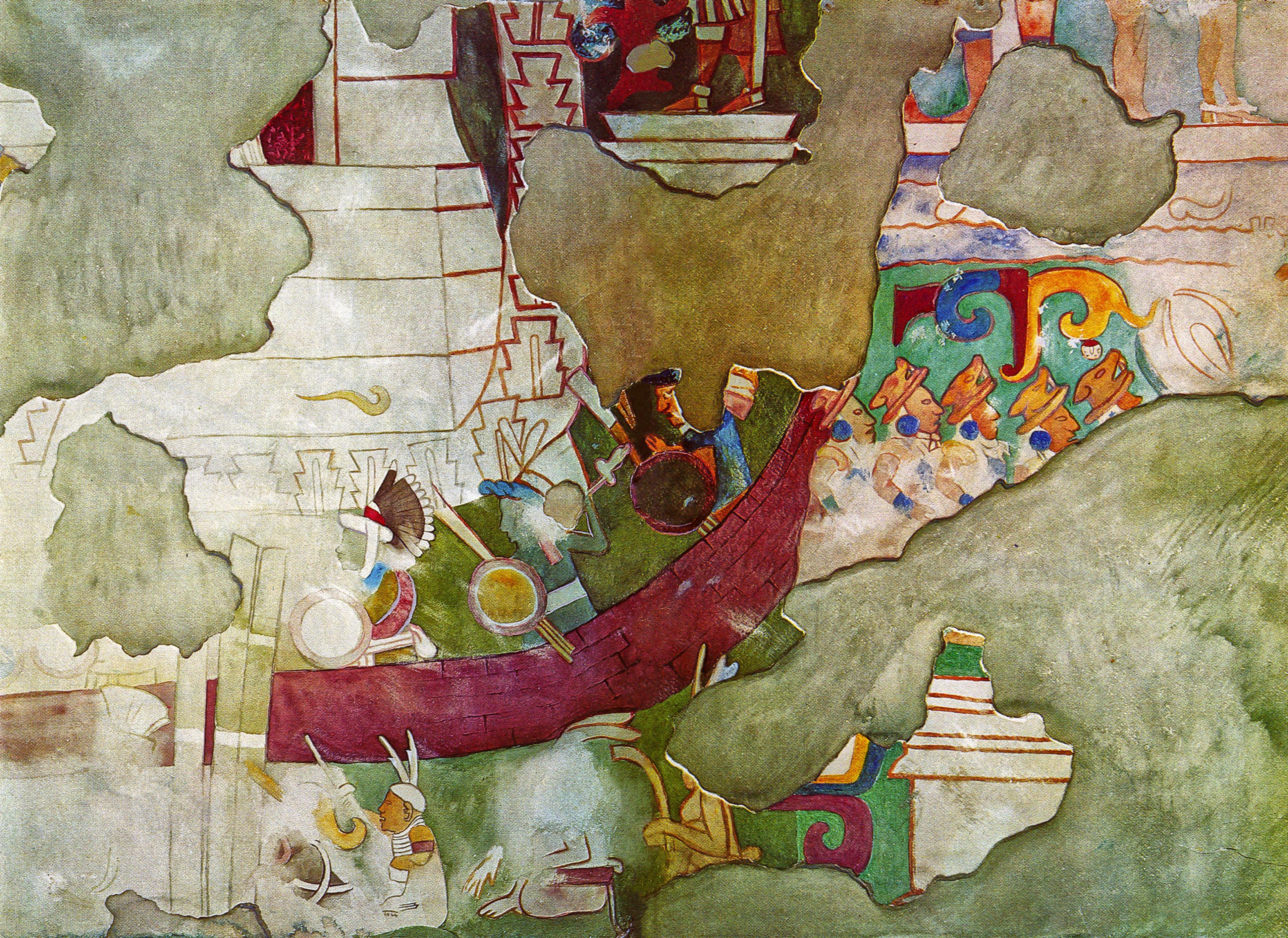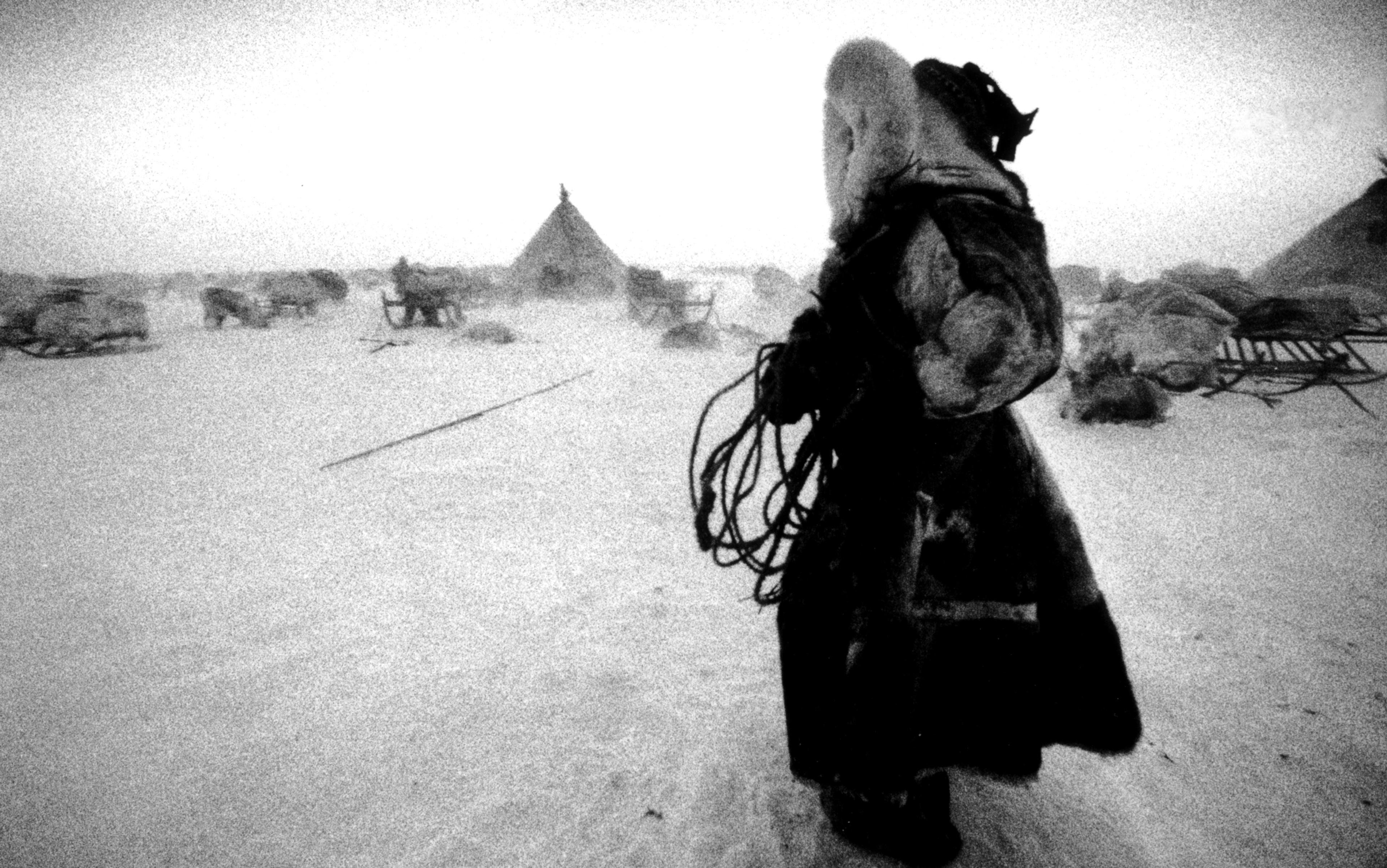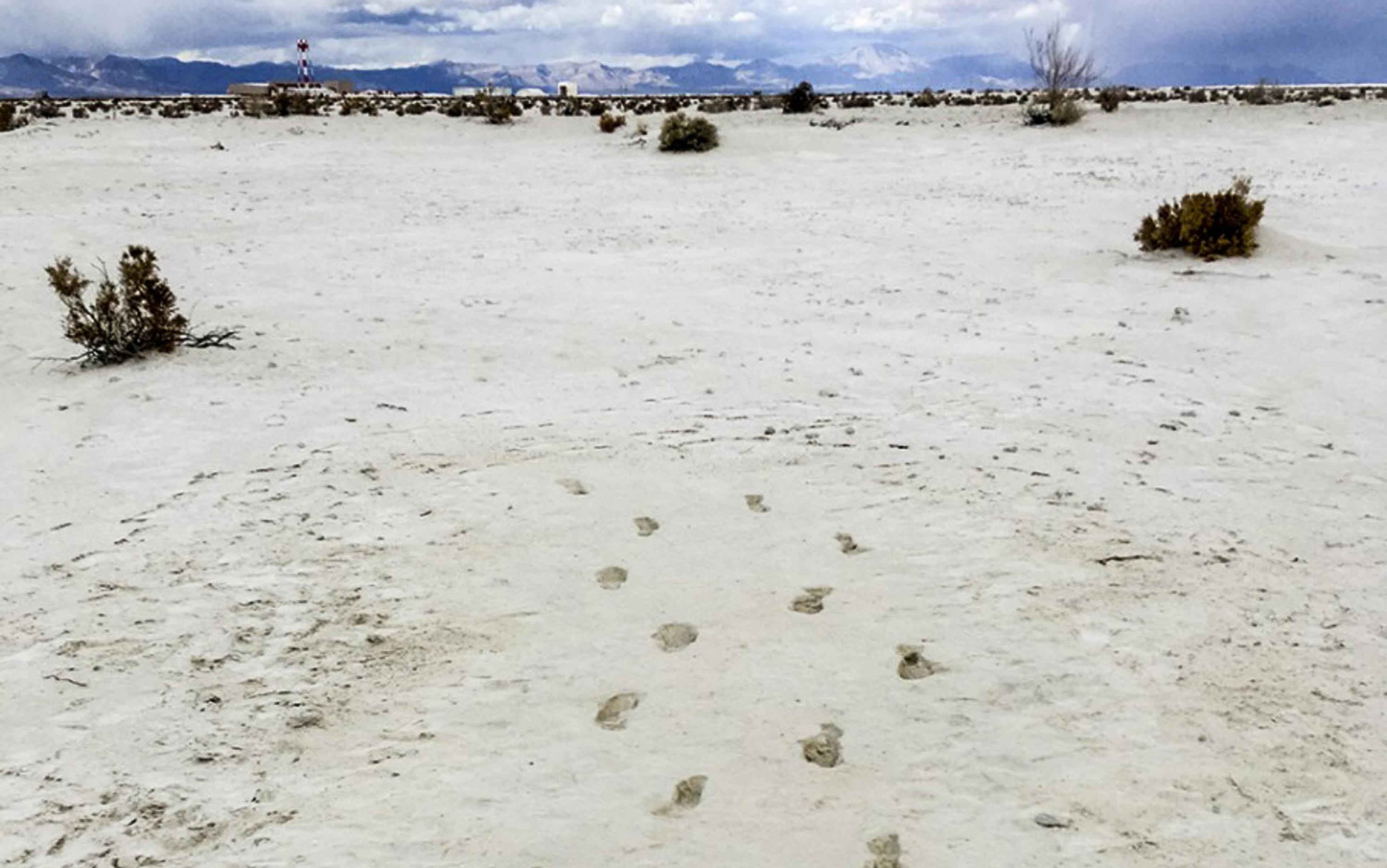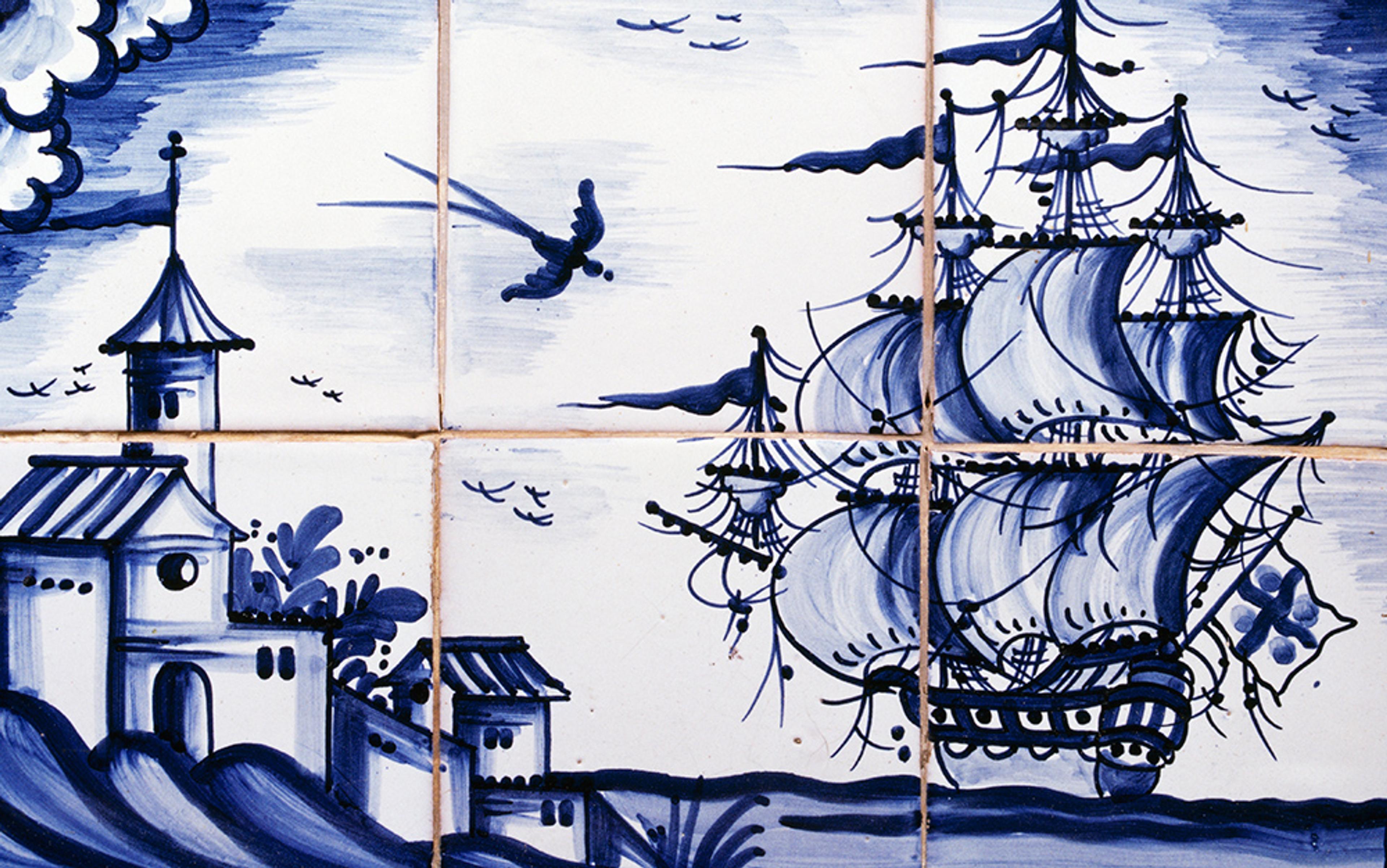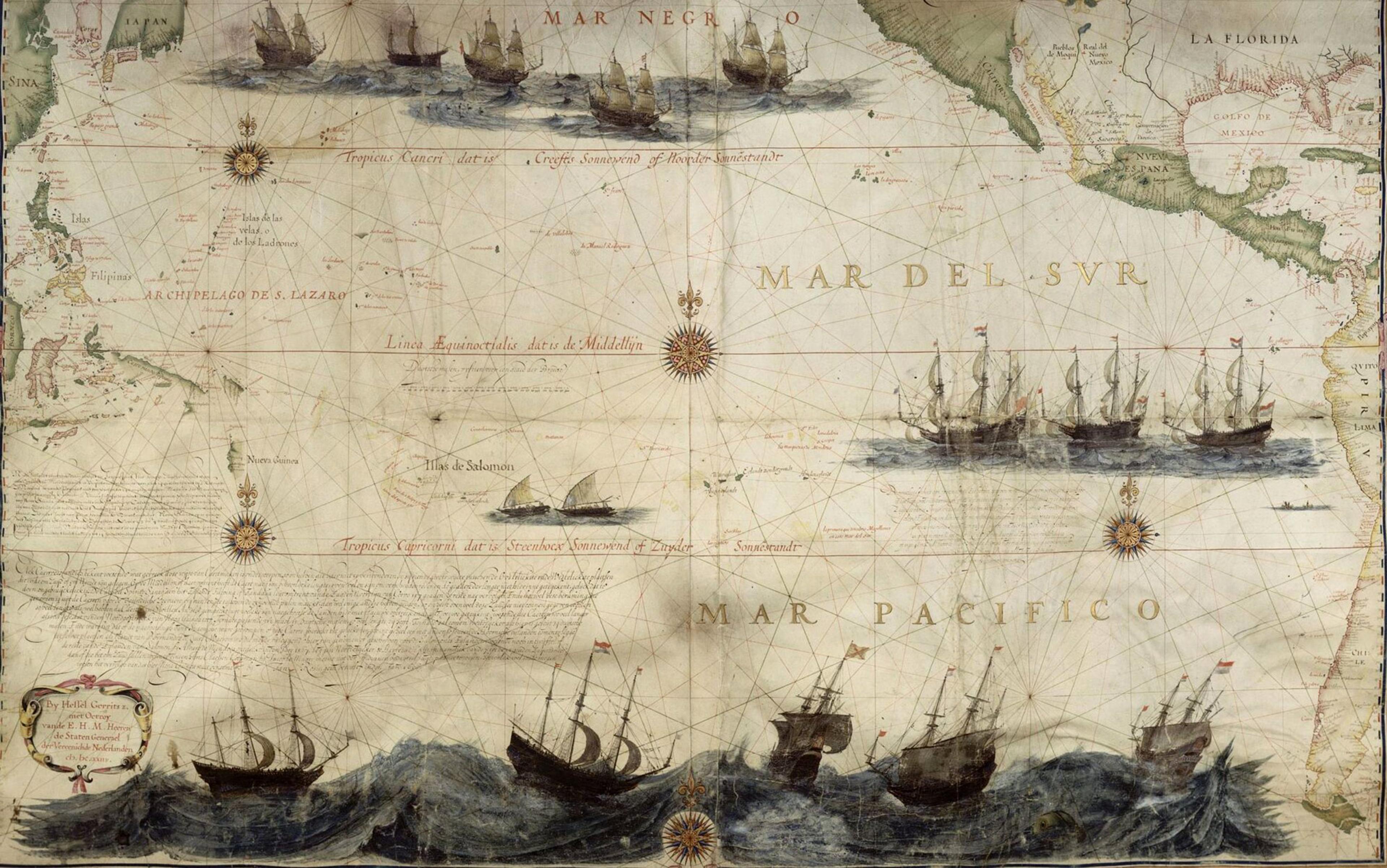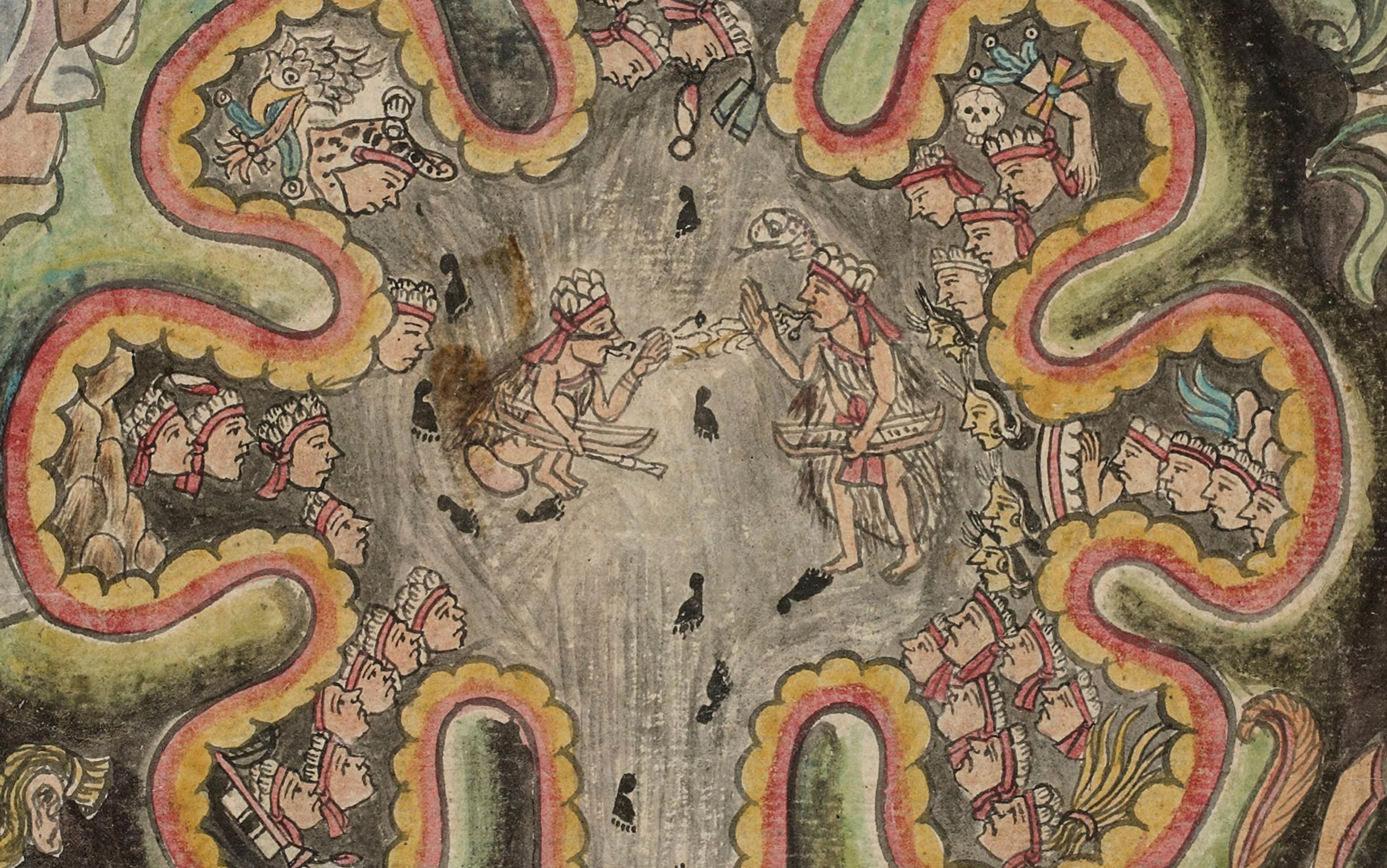Who, besides the indigenous peoples from Asia who crossed the Alaskan land bridge in prehistory, arrived in the Americas before Columbus? The question has fascinated generations of scholars. Could a Chinese tribute ship, as Gavin Menzies proposed in 2002, have departed from the rest of the Ming fleet in East Africa in 1421 and sailed to North and South America, Australia and the Arctic? Could fishing vessels from the British port of Bristol, as David Beers Quinn suggested in 1974, have followed schools of cod across the north Atlantic and reached the fishing grounds off the Canadian shore in 1480 or 1481? No persuasive evidence supports the claim about the 15th-century Chinese. The voyages of the Bristol cod fishermen are more likely, but no documentation concerning them predates 1492, possibly because they wanted to keep the location of the fishing grounds secret.
The most credible claim – that the Vikings reached North America around the year 1000 – deserves more attention. It arose in the 19th century, following the publication of C C Rafn’s Antiquitates Americanae (1837), which proposed that the place the Icelandic sagas called Vinland (meaning ‘vine land’) was located somewhere near Cape Cod in Massachusetts, or the islands of Nantucket and Martha’s Vineyard. (The Vinland Sagas refers to two different orally transmitted sagas about these early voyages: Erik the Red’s saga was written down shortly after 1264, and the Greenlanders’ saga was copied into a collection of different materials in 1387.)
According to these two sagas, the Vikings encountered a group of indigenous Amerindians, whom they called Skraelings, or ‘wretched ones’. The Norse traded red woollen textiles for animal pelts. That exchange marked a turning point in world history: it is the earliest documented encounter between the peoples living on opposite sides of the Atlantic.
Around the year 1000, Leif Erikson set sail from Greenland and landed first in ‘Stone-slab land’, then ‘Forest land’ and finally in Vinland, where Erikson and his men found ‘fields of wild wheat growing there, and vines, and among the trees there were maples’.
Where exactly did Erikson land? The sagas provide important clues. Vinland enjoyed more hours of daylight than Greenland: ‘In the depth of winter, the sun was aloft by mid-morning and still visible at mid-afternoon,’ information that places Vinland somewhere between New Jersey and the Gulf of Saint Lawrence.
In 1960, the Norwegian explorer Helge Ingstad and his wife, the archaeologist Anne Stine Ingstad, set out to find these places. Hoping that the descriptions in the sagas might lead them to Norse sites, they set off in a sailboat and went down the northeastern Canadian coast. They were looking for places mentioned in the sagas, including Forest Land, which ‘was flat and wooded, with white sandy beaches wherever they went; and the land sloped gently down to the sea’, a description that fit the Labrador coast perfectly. Continuing to sail in southerly direction, the Ingstads reached Newfoundland.
When they arrived at the village of L’Anse aux Meadows on the northern tip of the island, they asked the locals about possible Viking remains. One man showed them some grassy mounds on a beach, which the villagers believed were abandoned dwellings of native peoples. The structures turned out to be the collapsed remains of eight sod buildings originally held up by wooden frames.
Digging at the site for seven summers from 1961 to 1968, the Ingstads concluded that it was indeed a Viking settlement. The excavators found evidence of iron-working: a work shed with an anvil and a large stone, iron fragments, and slag. The working of gold, copper and arsenic occurred elsewhere in the Americas in the year 1000 but, because no one else in the Americas worked iron, the archaeologists reasoned that outsiders – quite possibly the Norse – had to be doing the smelting.
‘We let out a holler because we immediately knew that here was evidence that nobody could deny’
Archaeologists also uncovered traces of a wooden structure not connected to any of the walls. This was probably a boat-building frame, just like those in use in western Norway today. The vessel under construction measured no more than 25 feet (c8 metres) in length, which was typical for Norse boats used on inland waterways. L’Anse aux Meadows was the perfect location for a ship repair centre because it lay directly on the route across the North Atlantic to Greenland.
One item from the site was distinctively Scandinavian, confirming that the residents of the eight structures were definitely Norse: a straight bronze pin with a ring at the end of it. The archaeologists uncovered the pin on the final day of their last season in 1968. In her memoirs, Anne Stein Ingstad described the discovery: ‘We let out a holler because we immediately knew that here was evidence that nobody could deny – a bronze ring-headed pin indisputably like those from the Norse Viking period.’ Used to fasten a cloak at the neck, it matched bronze pins made between 920 and 1050 CE from other Norse sites in Ireland and Scotland.
The Norse stayed at L’Anse aux Meadows for only 10 years before deciding around 1010 CE to return home. It’s not clear why they left: disputes with the locals might have prompted their decision. They could also have realised that the goods available in North America – primarily pelts and lumber – wouldn’t support a settlement in the long term.
Even after their departure, the Norse continued to return to the Americas, most likely to pick up lumber since no trees grew on Greenland and Iceland. On one Greenland farm, archaeologists have found textiles preserved in ice that contain the fur of brown bear and bison, both animals native to North America but not present on Greenland, which points to continued contact with the Americas in the centuries after 1000 CE.
Only one Norse object found in the Americas dates to after the Vikings’ departure: a single penny, found at the Goddard site in the town of Brooklin in Maine, facing Penobscot Bay. The penny was minted between 1065 and 1080, some 50 years after the Vikings abandoned the L’Anse aux Meadows settlement.
How did the penny travel to the Goddard site in Maine? Most likely the Norse brought it with them to somewhere on Labrador or Newfoundland when they came to cut down trees. The locals could have trickle-traded the coin from one place to the next, until it arrived at Goddard. Or possibly a Viking carried the penny to this, the southernmost point where archaeological evidence of the Norse has surfaced. (The Kensington ‘Viking’ runestone in Minnesota is definitely a forgery.)
The Goddard site consisted of a large pile of shells and refuse measuring about 12 inches (30 cm) at its deepest point. A preponderance of bones from seals and sturgeon showed that they were the main elements of the local diet. Cross-sections of 17 teeth from harbour seal, grey seal and sea mink revealed that these creatures had been killed between June and October. Apparently, Amerindians gathered at the site each summer to feast on seals and sea mink. They also traded various items.
Archaeologists found objects at the Goddard site that were made with 10 different minerals including cherts (a type of flint used to start fires or make tools), rhyolites and jaspers originating from all across the northeastern United States and Canada. This quantity of non-local material shows that Goddard was an important node on a trading network stretching from the Atlantic coast to Lake Ontario and what is now Pennsylvania.
By travelling on trade routes from the Goddard site westward, into North America, the Vikings might have made their way deeper into the interior of the continent than people realise. Their possible routes reveal something important about the extent to which the Americas were connected in the year 1000, long before Columbus’s 1492 arrival in Hispaniola. They might have even reached as far as Mexico.
The most likely route to Mexico from the Goddard site ran through the Mississippi Valley. It would have been a long and difficult journey, and no evidence survives of anyone – or any single object – making the entire trip, but ongoing excavations and breakthroughs in scientific testing have demonstrated that a continent-wide trade network connected the major settlements of North America.
Any group travelling from northeastern North America into Ohio and on to the Mississippi River valley would have gradually noticed changes in the flora and fauna. As they moved closer to the Mississippi Valley, the visitors would have seen that corn was the major staple in the locals’ diet. They cultivated it intensively, rather than simply planting corn in the spring and returning in the Fall to harvest their crop as the northeasterners did.
The chocolate the Maya consumed and exported tasted nothing like a Hershey bar
Corn agriculture led to both population growth and an increase in village size. One of the largest settlements in the Mississippi Valley was at Cahokia (what is now East St Louis, Illinois), which has distinctive flat-topped earthen mounds. Cahokia expanded dramatically around 1050 CE. The lead archaeologist writing about the site, Timothy R Pauketat, refers to the changes of that year as ‘the Big Bang’, when some 20,000 people lived in the city or nearby suburbs. Cahokia was the largest urban complex in the continental US before 1492.
Excavations at Cahokia have produced solid evidence of long-distance trade. Mica, a flaky mineral that catches the light, came from the Appalachian Mountains of North Carolina, and copper was sourced from Lake Superior. The Cahokians also imported conch and whelk shells from the Gulf of Mexico.
Archaeology rarely reveals exactly how or in what way one society influenced another. Scholars have long wondered whether the Cahokians and the Maya had any direct contacts; the intensive cultivation of corn, which originated in Mexico, underlay the Cahokia population explosion of 1050 CE, and its open plazas and mounds, as well as its satellite towns, resemble similar earthworks in Maya cities.
Careful examination of corpses from Cahokia revealed a surprise: several individuals buried at the site had front incisor teeth with one to four notches on the bottom edge. Since only Mesoamericans altered their teeth in this way, these are probably the remains of Mesoamericans who died in Cahokia.
Archaeologists also found a Mesoamerican skeleton with notched teeth at Chaco Canyon in New Mexico, about 1,000 miles (c1,600 km) due west of Cahokia. Chaco Canyon’s population of a few thousand was considerably smaller than Cahokia’s 20,000. But its great houses that sheltered hundreds of residents, its large, round underground storage rooms, and expansive plazas still impress tourists today. The largest great house at Chaco is the Pueblo Bonito. Tree-ring dating shows that its construction began in 860 and ended in 1128, when the Ancestral Puebloan peoples migrated elsewhere. The residents of Chaco Canyon imported macaw feathers and caged live birds from the Maya, who lived some 2,000 miles (c3,200 km) away in the Yucatán Peninsula.
At Chaco Canyon, investigators found evidence of another item imported from the Maya. The scientists tested some fragments of broken storage jars dating to 1000-1125 CE for residues, and found traces of chocolate’s telltale chemical signature, theobromine. (Chocolate was first domesticated in Ecuador about 1900 BCE.) Making chocolate is a complex, multistep process: once cultivators open the pods, they have to germinate the seeds (otherwise they won’t taste like chocolate), dry them for one or two weeks in the sun, roast them (for the same reason), and remove the useless shell.
The chocolate the Maya consumed – and exported to the Chaco site where it was found in jars – tasted nothing like a Hershey bar, even though the Hershey Company funded the research. The Maya drank their chocolate unsweetened and spiced with chilli peppers; they frothed it by pouring it from one cup to another and then back again, just as tea vendors in Indian train stations do.
What did the Maya import from Chaco Canyon in exchange for chocolate and macaw birds? Turquoise. Many of the objects found at the Maya city of Chichén Itzá were dredged from a nearly round, large sinkhole, measuring 187 feet (57 m) across at the widest point, which was fed with ice-cold water coming from underground streams. This is called the Sacred Cenote because the Maya performed rituals in which they burned and hacked apart offerings before tossing them into the pool.
The Sacred Cenote finds made it possible to pinpoint when the Maya began to trade with their neighbours to the south. Before 900 CE, the Maya hadn’t made any luxury goods from metal. They crafted their most valuable goods from lustrous green jade, technically jadeite, which they collected in the Motagua River valley in Guatemala. Sometime around 900 CE, the Maya began to import from Costa Rica, Panama and Colombia small metal bells and elaborately decorated flat disks made of gold, copper or a mix of the two. Archaeologists found goods in the Sacred Cenote from as far south as Colombia. No item made farther south than Colombia ended up in the Sacred Cenote or has been found anywhere else in Mexico. This finding suggests that direct trade in objects between the Andean cultural areas and the Maya occurred only after 1492.
Still, the knowledge of certain metallurgical techniques moved north from the Andean region to Mexico. Andean metallurgists developed a bronze unlike that in use in the rest of the world because it supplemented the main ingredient of copper with arsenic instead of tin. (Arsenical bronze gives off poisonous fumes when heated but, once the metal assumes its final shape, it poses no danger.)
Some of the Andean peoples used this bronze to make symbolic money, which came in different shapes. One type was axe shapes cut from flat, pounded sheets, which were then tied into bundles.
Similar axe-moneys, also made from arsenic bronze, have been found in western Mexico from around 1200 CE. Just like the axe-moneys of the Andes, they were cut from thin sheets and tied together. The Andes and Mexico each had their distinctive axe-moneys, and the currencies didn’t circulate outside their home regions. The knowledge of how to make such axe money must have travelled north from the Andes to Mexico, likely passing from one metalworker to another. This was a trade in ‘watch me do this’ rather than an exchange of physical objects.
Maya canoes didn’t go as far south as the Andes, but they did go up and down the Caribbean coast near Chichén Itzá on the Yucatán Peninsula. Just 70 miles (c115 km) from the city, on the northern coast of the peninsula, lies the coastal port of Isla Cerritos. Coming into use around 900 CE, the port is a miniature Chichén Itzá, with a plaza, ball court and temple buildings. Finds of obsidian, plumbate ceramic vessels with a metallic sheen, turquoise, jade ornaments and ornaments made from copper and gold indicate that Isla Cerritos was on maritime routes connecting Chichén Itzá with northern and western Mexico, the southwestern US, and Panama and Costa Rica.
These prisoners of war with blond hair, light eyes and pale skin have been thrown into the water to drown
Some murals from the Temple of the Warriors in Chichén Itzá suggest that residents might have had contact with Vikings. Could the Vikings who left a settlement at L’Anse aux Meadows have made it to the Yucatán Peninsula – some 3,700 miles (c6,000 km) south of where the Viking penny surfaced at the Goddard site? One of the murals at the Temple of Warriors, painted around 1000 CE, depicted a naval battle scene showing blond-haired men being thrown into the water.
The mural was already badly damaged in 1925 when a team from the Carnegie Institution of Washington first found it at the Temple of the Warriors. Clearing the temple of rubble and trees, the investigators reconstructed multiple wall paintings, all rapidly deteriorating, from fragments lying on the floor. The only versions that survive today are black-and-white drawings and watercolour reproductions done by the team between 1925 and 1934. After being copied, the murals were destroyed in a hurricane. Because today’s visitors aren’t allowed to enter any of the structures at Chichén Itzá, it’s no longer possible to view the original location of the murals.
Many of the wall paintings at the Temple of Warriors depict battles between two sides, who are often shown as having skin of different hues. But the painting of the blond-haired men depicts people unlike those shown in other murals, according to two eminent Maya scholars – the late Michael D Coe, an expert on Maya archaeology, and the art historian Mary Miller, now director of the Getty Research Institute in Los Angeles.
One prisoner is in the water with his arms bound. A captor grabs the hair of another, whose hair has beads woven into it, as is common for captives shown in other Maya paintings. Both of these unfortunate prisoners of war with blond hair, light eyes and pale skin have been thrown into the water to drown.
Who were these victims? Could they have been Norse captured by the Maya? The first scholars who wrote about these paintings in the 1940s didn’t think so. But today, thanks to the excavation of L’Anse aux Meadows, we know that the Norse were in North America in the year 1000, and that the Temple of the Warriors was built just after 1000.
Opponents of this view note that Maya artists portrayed warriors using different colour schemes; they therefore dismiss the blond hair of the captives as artistic convention. They also suggest that the original pigments might have changed in the 1,000 years before the watercolour copies were made.
Another problem: no Scandinavian artifacts – nothing like the cloak-fastening bronze pin from L’Anse aux Meadows – have been found in the Yucatán Peninsula. But many things we know from written documents have left no archaeological traces at all. For example, archaeologists have found hardly any traces of the 1066 Battle of Hastings, which gave England to William the Conqueror, but we know that it happened.
In short, we can’t be certain that the Norse were at Chichén Itzá: only a diagnostic artifact such as the cloak-fastening bronze pin, or genetic evidence showing Scandinavian DNA from around the year 1000 would clinch the case. Such evidence might someday surface. Although not a certainty, it is a possibility that some Vikings made it to the Yucatán Peninsula near the year 1000.
If the Norse did reach Chichén Itzá, how did they get there? A possible Viking ship appears in a mural in a different building called Las Monjas, or ‘The Nunnery’. (The Spaniards assumed that any building with a large courtyard nearby had to be a nunnery, but the Maya had no nunneries.) Built before 950 CE, the Nunnery contains murals that might have been painted slightly later.
One Nunnery mural shows no captives but depicts a boat with clearly delineated planks, or strakes. The use of planks indicates that the Nunnery boat couldn’t have been a local craft because the Maya, like most of the peoples living in the Americas, made their canoes by burning and hollowing out tree trunks. Only one Amerindian people ever made boats with sewn planks, the Chumash, who lived in modern-day Santa Barbara, California. The sharply outlined strakes in this mural are better evidence of Norse presence at Chichén Itzá than the paintings of the blond-haired captives.
Could a Viking ship have made it to the Yucatán Peninsula? The Norse sagas tell us that winds and weather frequently prevented Viking ships from reaching their destinations. A Norse boat could have been blown off course in a storm, been pulled across the North Atlantic by the ocean’s prevailing currents, and then come to rest on the coast of the Yucatán Peninsula. This would have been a difficult but not impossible voyage.
Around 1100, the last year that any major monuments were built, Chichén Itzá began to decline. It was abandoned sometime after 1200 CE. Archaeologists aren’t certain why, but they suspect drought was the cause.
We have to realise that Europeans didn’t invent globalisation
In 1502, Christopher Columbus and his men encountered a Maya dugout canoe near the island of Guanaja, 43 miles (70 km) off the north coast of Honduras. Columbus’s illegitimate son Ferdinand described the encounter in the biography he wrote of his father: ‘[M]ade of a single tree trunk like the other Indian canoes’, the vessel was propelled by 25 paddlers and was as long as a ‘Venetian galley’, approximately 165 feet (50 m). The Maya hollowed out the trunks of the giant elephant ear (or guanacaste) tree to make their dugout canoes. In addition to the men who rowed, the canoe carried women, children, their possessions, different goods and foods including roots, grains and corn alcohol. Ferdinand didn’t record the destination of the Maya canoe, but it could have been travelling along the coast or on its way north to Cuba or to another Caribbean island.
Columbus fully grasped the significance of that giant canoe: it revealed ‘to him in a single moment … all the products of that country’. He confiscated the ‘costliest and handsomest things’: embroidered and painted cotton clothing, wooden swords, ‘flint [probably obsidian] knives that cut like steel’, and copper bells.
The Spaniards didn’t understand much of what they saw. Some of Columbus’s men mistook copper for gold. Columbus didn’t recognise cacao beans – he called them almonds – but in other regards he was an astute observer and he did notice how carefully the Indians handled the cacao beans: ‘when they were brought aboard with the other goods, and some fell to the floor, all the Indians squatted down to pick them up as if they had lost something of great value’.
Ferdinand’s account offers contemporary evidence for what archaeologists have also learned: that the resident peoples of the Americas constructed a sophisticated network of trade pathways long before the Spanish arrived in the Americas. In the year 1000, that network centred on Chichén Itzá and extended north to Chaco Canyon and to Cahokia; it reached as far as Colombia in the south but didn’t connect with the Andean region of Peru, which had its own extensive pathways.
The Norse voyages of 1000 CE opened up a new route across the North Atlantic that connected existing pathways in the Americas to those in Europe. But Columbus’s voyages pioneered a new maritime route across the mid-Atlantic with far greater consequences. Columbus and his successors unwittingly introduced smallpox, the flu and the common cold to the indigenous peoples of the Americas. Some 90 per cent of the entire population, estimated to be between 10 and 20 million, perished in the following 100 years.
After 1522, various voyagers followed the lead of Ferdinand Magellan’s ship and circumnavigated the globe, a route that no individual in 1000 CE had completed. Trade increased once all the world’s regions were connected.
Still, we have to realise that Europeans didn’t invent globalisation. Existing intra-American trade pathways and relationships facilitated the European conquest of the Americas that began in 1492. We don’t have definitive evidence of Vikings in Mexico, but there are suggestive clues, and the case for trade relationships and pathways connecting the Americas is beyond dispute.
